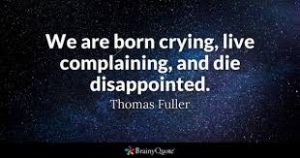The idea that emotions regulate social interaction is increasingly popular. But exactly how do emotions do this? To address this question, I draw on research on the interpersonal effects of emotions on behavior in personal relationships, parent–child interactions, conflict, negotiation, and leadership, and propose a new framework that can account for existing findings and guide future research: the emotions as social information (EASI) model. I demonstrate that emotional expressions affect observers’ behavior by triggering inferential processes and/or affective reactions in them. The predictive strength of these two processes—which may inspire different behaviors—depends on the observer’s information processing and on social-relational factors. Examples of moderators that determine the relative predictive strength of inferences and affective reactions include power, need for cognitive closure, time pressure, display rules, and the appropriateness and target of the emotional expression, which are all discussed.
Emotions seem to rule our daily lives. We make decisions based on whether we are happy, angry, sad, bored, or frustrated. We choose activities and hobbies based on the emotions they incite.
What Exactly Is an Emotion?
According to the book, “Discovering Psychology,” “An emotion is a complex psychological state that involves three distinct components: a subjective experience, a physiological response, and a behavioral or expressive response.”
In addition to understanding exactly what emotions are, researchers have also tried to identify and classify the different types of emotions. In 1972, psychologist Paul Eckman suggested that there are six basic emotions that are universal throughout human cultures: fear, disgust, anger, surprise, happiness, and sadness. In 1999, he expanded this list to include a number of other basic emotions, including embarrassment, excitement, contempt, shame, pride, satisfaction, and amusement.
During the 1980s, Robert Plutchik introduced another emotion classification system known as the “wheel of emotions.” This model demonstrated how different emotions can be combined or mixed together, much the way an artist mixes primary colors to create other colors. Plutchik suggested that there are 8 primary emotional dimensions: happiness vs. sadness, anger vs. fear, trust vs. disgust, and surprise vs. anticipation. These emotions can then be combined in a variety of ways. For example, happiness and anticipation might combine to create excitement.
1. The Subjective Experience
While experts believe that there are a number of basic universal emotions that are experienced by people all over the world regardless of background or culture, researchers also believe that experiencing emotion can be highly subjective. While we might have broad labels for certain emotions such as “angry,” “sad,” or “happy,” your own unique experience of these emotions is probably much more multi-dimensional. Consider anger. Is all anger the same? Your own experience might range from mild annoyance to blinding rage.

Plus, we don’t always experience pure forms of each emotion. Mixed emotions over different events or situations in our lives are common. When faced with starting a new job, you might feel both excited and nervous. Getting married or having a child might be marked by a wide variety of emotions ranging from joy to anxiety. These emotions might occur simultaneously, or you might feel them one after another.
2. The Physiological Response
If you’ve ever felt your stomach lurch from anxiety or your heart palpate with fear, then you realize that emotions also cause strong physiological reactions. (Or, as in the Cannon-Bard theory of emotion, we feel emotions and experience physiological reactions simultaneously.) Many of the physical reactions you experience during an emotion, such as sweating palms, racing heartbeat, or rapid breathing are controlled by the sympathetic nervous system, a branch of the autonomic nervous system. The autonomic nervous system controls involuntary body responses, such as blood flow and digestion. The sympathetic nervous system is charged with controlling the body’s fight-or-flight reactions. When facing a threat, these responses automatically prepare your body to flee from danger or face the threat head-on.

While early studies of the physiology of emotion tended to focus on these autonomic responses, more recent research has targeted the brain’s role in emotions. Brain scans have shown that the amygdala, part of the limbic system, plays an important role in emotion and fear in particular. The amygdala itself is a tiny, almond-shaped structure that has been linked to motivational states such as hunger and thirst as well as memory and emotion. Researchers have used brain imaging to show that when people are shown threatening images, the amygdala becomes activated. Damage to the amygdala has also been shown to impair the fear response.
3. The Behavioral Response
The final component is perhaps one that you are most familiar with—the actual expression of emotion. We spend a significant amount of time interpreting the emotional expressions of the people around us. Our ability to accurately understand these expressions is tied to what psychologists call emotional intelligence, and these expressions play a major part in our overall body language. Researchers believe that many expressions are universal, such as a smile indicating happiness or pleasure or a frown indicating sadness or displeasure. Cultural rules also play an important role in how we express and interpret emotions. In Japan, for example, people tend to mask displays of fear or disgust when the authority figure is present.

4.Emotions vs. Moods
In everyday language, people often use the terms “emotions” and “moods” interchangeably, but psychologists actually make distinctions between the two. How do they differ? An emotion is normally quite short-lived, but intense. Emotions are also likely to have a definite and identifiable cause. For example, after disagreeing with a friend over politics, you might feel angry for a short period of time. A mood, on the other hand, is usually much milder than an emotion, but longer-lasting. In many cases, it can be difficult to identify the specific cause of a mood. For example, you might find yourself feeling gloomy for several days without any clear, identifiable reason.

REGARDS:RAMSHA AKRAM
🔥78 Views






